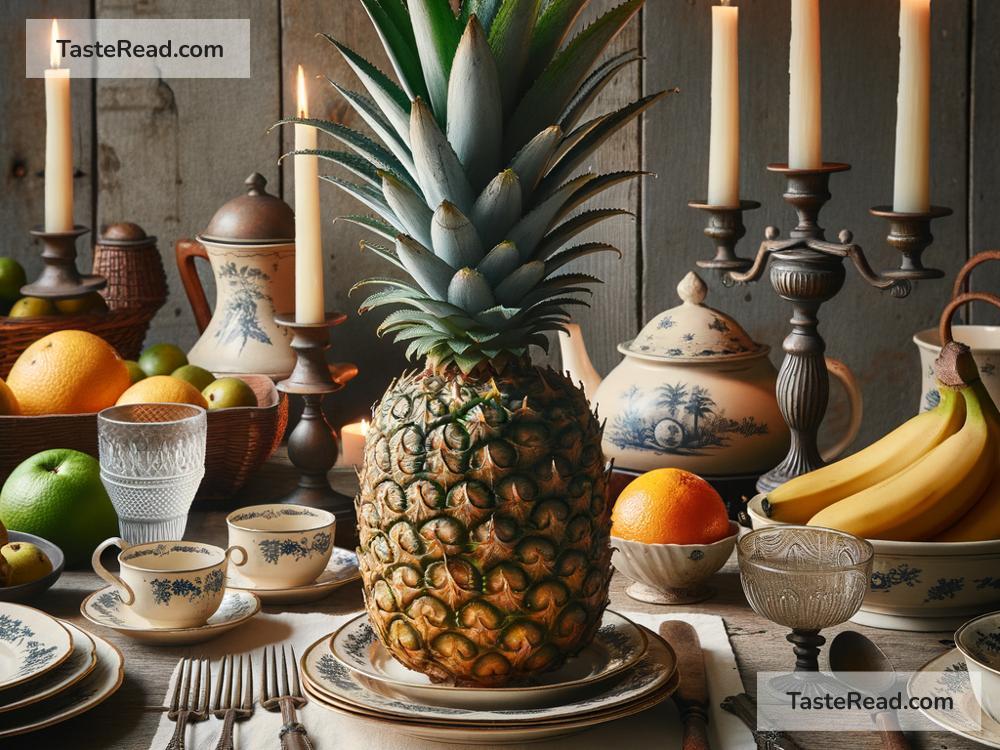The Curious History of Pineapples in Colonial America
Pineapples are a popular fruit today, but did you know that they were once the ultimate symbol of luxury and hospitality in colonial America? In the 17th and 18th centuries, pineapples were so rare and expensive that only the wealthiest people could afford them. Their fascinating history tells us a lot about colonial life, trade, and culture.
The Arrival of Pineapples in America
The pineapple is not originally from America. It comes from South America, where indigenous peoples were growing and enjoying the fruit long before Europeans arrived. Explorers like Christopher Columbus first encountered pineapples in the late 15th century and brought them back to Europe. Europeans were amazed by the fruit’s sweet taste and unique appearance, with its prickly skin and crown of spiky leaves.
Pineapples eventually made their way to the American colonies through trade. In the 17th century, ships brought them from the Caribbean islands, where they were grown. The warm climate of the Caribbean was perfect for pineapples, but they couldn’t be grown in the colder colonies, so they remained exotic and rare. By the time they arrived in ports like Boston, Philadelphia, and Charleston, pineapples had traveled for weeks on ships, making them even more expensive.
A Symbol of Wealth and Prestige
In colonial America, pineapples quickly became associated with wealth and status. Because of their rarity, they were beyond the reach of most ordinary people. Wealthy families would display pineapples at their parties and gatherings to show off their social standing. Hosts placed pineapples in the center of the dining table as the ultimate centerpiece, surrounded by other food, flowers, and decorations. A pineapple on the table told guests that the host was rich, worldly, and eager to provide a memorable experience.
Sometimes, people who couldn’t afford to buy a pineapple would rent one! Special merchants rented pineapples to families for parties. After the event, the fruit was returned so it could be rented out again. Renting a pineapple may sound strange, but it shows how important these fruits were as status symbols.
Pineapples and Hospitality
Aside from representing wealth, pineapples also became a symbol of hospitality in colonial America. This idea originated from the Caribbean, where indigenous peoples would offer pineapples to welcome visitors. Colonists adopted the custom, and the fruit came to symbolize warmth, generosity, and friendliness.
You may have noticed that pineapples are a common motif in home décor, especially in the southern United States. For example, pineapples appear on signs, dishes, furniture, and even door knockers. This tradition goes back to colonial times and reflects the idea that welcoming someone to your home is an honorable and kind gesture.
Pineapples in Art and Architecture
Because pineapples were admired and rare, they started appearing in art and architecture during the colonial days. Wealthy families would include pineapple designs in their furniture and wallpaper. Craftsmen carved pineapples into bedposts, chests, and sideboards as decorative elements.
Some public buildings, like inns and taverns, also adopted the pineapple as a sign of hospitality. Customers could tell they were welcome just by looking at the pineapple decorations outside or inside the establishment. The fruit’s appearance as an architectural detail added beauty and charm to many spaces.
The Decline of Pineapple’s Exclusivity
By the mid-19th century, pineapples became less rare and more affordable. Advancements in transportation and shipping made it easier to import the fruit to America. Steamships replaced slower sailing vessels, and new preservation methods kept pineapples fresh during long journeys. Over time, commercial pineapple farming increased, especially in places like Hawaii.
As pineapples became more common, they lost their status as a luxury item. Ordinary families could now enjoy the fruit, and it was no longer a symbol of exclusivity. Even so, the connection between pineapple and hospitality remained strong and endures to this day.
Pineapples in Modern Times
Today, you can find pineapples at grocery stores almost anywhere in America, and they are no longer considered rare or luxurious. However, their historical significance hasn’t been forgotten. Pineapples are still used as decorations on wedding cakes, home décor items, and souvenirs. They’re also popular in recipes and cocktails, such as pineapple upside-down cake and piña coladas.
When you enjoy a juicy slice of pineapple or see a pineapple motif in someone’s home, remember its curious history in colonial America. What was once a symbol of immense wealth and prestige is now an everyday treat enjoyed by people around the world.
Conclusion
The history of pineapples in colonial America is a story of rarity, status, and symbolism. From their journey across the Atlantic to their role as table centerpieces and artistic inspiration, pineapples shaped colonial culture in surprising ways. Though they are now commonplace, they remain a reminder of hospitality, generosity, and the ways in which food can connect people. So next time you eat a pineapple or see one, take a moment to appreciate its remarkable journey through history!


